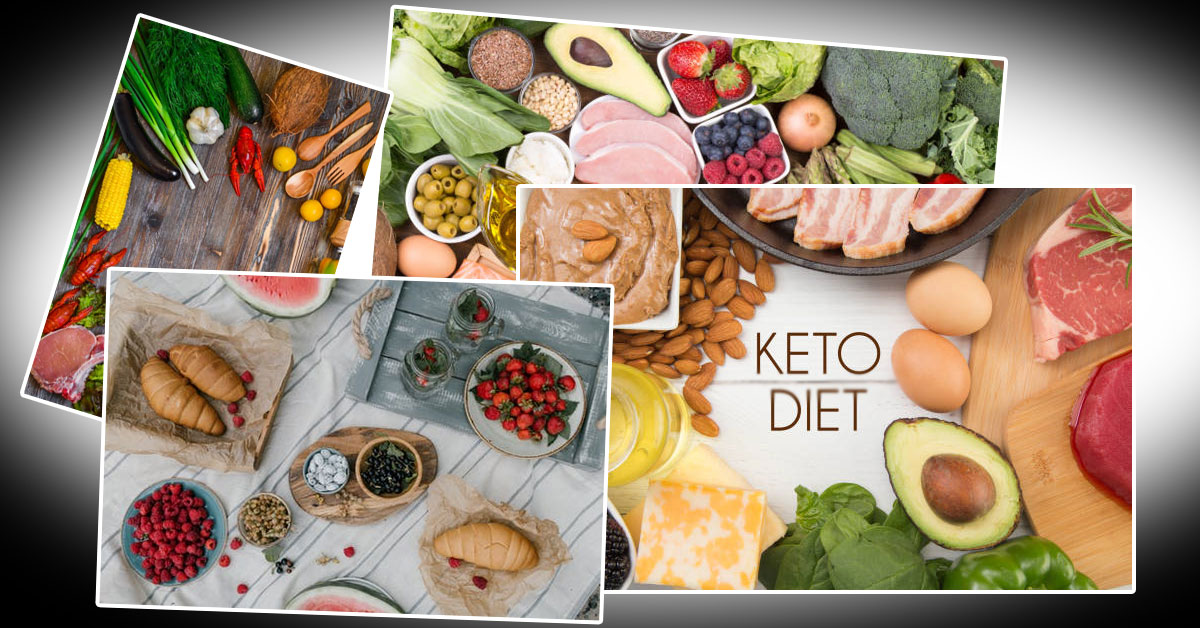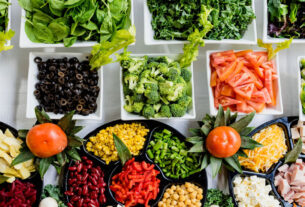Ketogenic is a term that means a low carbohydrate diet. An extreme low carbohydrate diet that helps to enhance fat metabolism into ketone bodies. A keto or ketogenic eating regimen of a low-carb, slight protein, the higher-fat diet that let you burn fat greater efficaciously. It has many benefits of weight loss, health, and overall performance, as proven in over 45 studies. That’s why it’s endorsed by so many doctors.
A keto diet can be especially useful for losing extra frame fat without hunger. Ketogenic activities can stimulate the metabolic effects of starvation. Ketogenic diet in simple terms means high fat and low carbohydrate
How does it work?
When you eat less than 50 grams of carbohydrates per day, your body gradually runs out of blood sugar. This typically takes 3 to 4 days. Then your body will initiate to break down protein and fat for the required energy, which can make you lose weight. This is called ketosis. It’s important to note that the ketogenic diet is a temporary diet that’s concentrated on weight loss instead of concentrating on health benefits.
Who Uses It?
People who use a ketogenic diet mostly focus on weight loss lose weight, but it aids to manage some medical conditions, like epilepsy, too. It also may help people with heart disease, brain diseases, and even acne, etc… Before starting a ketogenic diet Talk with your nutritionist to find out if it’s safe for your body especially if you have type 1 diabetes.
Side Effects
The more common side effect of the ketogenic diet is constipation, mild low blood sugar, and indigestion. In some cases there is some evidence of low-carb diets can lead to kidney stones or high levels of acid in your body (acidosis). Other side effects can include headache, weakness, and irritability; bad breath; and fatigue.
How much does Keto Diet cost?
Meat and fresh veggies are more expensive than most processed foods. What you pay for ketofriendly foods will vary together with your need for protein source and quality. You can buy less-expensive, leaner cuts of meat and bake them up with some oil. Buying less-exotic, inseason veggies will facilitate keep you inside budget.
How can I eat on a Keto diet?
CAN EAT
- NUTS + SEEDS (macadamias, walnuts, sunflower seeds)
- OTHER FATS (Salads of high fat dressings, oil, saturated fats)
- AVACADO + BERRIES (low glycemic impact berries like raspberries, blackberries, etc )
- HIGH-FAT DAIRY (hard cheese, full eat cream, butter)
- ABOVE GROUND VEGGIES (broccoli, cauliflower)
- LEAFY GREENS (spinach, Kale)
- MEATS (fish, beef, lamb, poultry, eggs)
CANNOT
- GRAINS (wheat, corn, rice, cereal)
- SUGAR (honey, agave, maple syrup)
- FRUITS (Apples, bananas, orange )
- STARCHY ROOT VEGGIES (potato, yams)
How much should you exercise on Keto Diet?
To get the maximum effect from the keto diet, you should be physically active and do exercises. You might need to take it easier during the first days of ketosis, especially if you feel fatigued or lightheaded. Walking, doing aerobics, running, weightlifting, training with kettlebells, or
whatever workout you prefer will boost your energy additional
Different types of ketogenic diets
There are many types of the ketogenic diet that differ from one to another, including:
- The standard ketogenic diet (SKD): This is a very minute carbohydrate, moderate protein, and high-fat diet. It generally contains 70% fat, 20% protein, and 10% carbohydrates
- High protein ketogenic diet: This is almost the same as a standard ketogenic diet, but includes more protein. The ratio is 65% fat, 30% protein, and 5% carbs.
- The targeted ketogenic diet (TKD): This diet permit you to add carbohydrates around workouts.
- The cyclical ketogenic diet (CKD): This diet includes periods of higher carbohydrate refeeds, such as 5 ketogenic days followed by 2 high carbohydrate days.
However, only the standard and high protein ketogenic diets that are widely used have been studied extensively. Cyclical ketogenic diets are most commonly used by bodybuilders or athletes
HEALTH BENEFITS OF KETO DIET
- DIABETICS – Diabetes is specified by changes in metabolism, high blood sugar, and impaired insulin function. The ketogenic diet can aids you reduce excess fat, which is closely linked to type 2 diabetes.
- Heart disease. The low carb diet can aid to increase factors like body fat, HDL (good) cholesterol levels, blood pressure, and blood sugar
- Cancer. The diet is currently being used as a part of treatment for cancer, because it may help slow down the growth of the tumor.
- Alzheimer’s disease. The keto diet may help decrease symptoms of Alzheimer’s disease and slow its progression
- Epilepsy. The low carb diet can cause major reductions in seizures in epileptic children
- Parkinson’s disease. the low-carb diet aids to improve symptoms of Parkinson’s disease
- Polycystic ovary syndrome. The low carb diet can help reduce insulin levels, which may play a significant role in polycystic ovary syndrome
- Brain injuries. Some researchers found that a low carb diet could improve outcomes of traumatic brain injuries
A SAMPLE KETO PLAN FOR 1 WEEK
Monday
breakfast: Bacon & egg with avocado
lunch: chicken salad with olive oil, feta cheese, olives, and a side salad
dinner: baked salmon with asparagus cooked in butter
Tuesday
breakfast: coconut cereal
lunch: almond milk, peanut butter, spinach, cocoa powder, and stevia milkshake, a green smoothie with a side of sliced strawberries
dinner: baked chicken with herbs
Wednesday
breakfast: keto bread with butter
lunch: avocado shrimp salad or egg salad
dinner: pork chops with Parmesan cheese, broccoli, and salad or beef stroganoff
Thursday
breakfast: egg with avocado basket omelet with avocado, salsa, peppers, onion, and spices
lunch: cheeseburger soup
dinner: chicken stuffed with pesto and cream cheese, and a side of grilled zucchini
Friday
breakfast: sugar-free Greek, omelet with avocado
lunch: loaded chicken salad with veggies
dinner: loaded cauliflower and mixed veggies
Saturday
breakfast: keto breakfast sausage sandwich
lunch: stuffed chicken avocado salad
dinner: baked white fish with kale and veggies salad
Sunday
breakfast: fried eggs with and mushrooms
lunch: low carb sesame chicken and broccoli
dinner: seared scallops with cheese sauce
Always try to eat different vegetables and rotate non-veg dishes over the long term, as each type provides different nutrients and health benefits.
Foods to avoid
Any food that’s rich in carbohydrate must be avoided
Here’s a list of foods that required to be limit on a ketogenic diet:
- sugary foods: fruit juice, baked items, smoothies, cake, ice cream, candy, etc.
- grains : wheat items, rice, pasta, cereal, etc.
- fruit: all fruit, except small portions of berries like raspberries, blueberries, etc
- legumes: peas, beans, lentils, chickpeas, etc.
- root vegetables : potatoes, sweet potatoes, carrots, parsnips, etc.
- food which free from sugar: sugar-free candies, syrups, puddings, sweeteners, desserts, etc.
- alcohol: beer, wine, liquor, mixed drinks
- unhealthy fats: processed vegetable oils, mayonnaise, etc.
- low fat or diet products: low-fat mayonnaise, salad dressings, and condiments
- some condiments or sauces: barbecue sauce, honey mustard, teriyaki sauce, ketchup, etc.
KETO SNACKS
If you feel hungry in between meals, you can have any of the following snacks
- fatty meat or fish
- cheese
- a handful of nuts or seeds
- keto sushi bites
- strawberries and plain cottage cheese
- fat bombs
- full-fat Greek yogurt mixed with nut butter and cocoa powder
- olives
- one or two hard-boiled or deviled eggs
- keto-friendly snack bars
- 90% dark chocolate
- bell peppers and guacamole
- celery with salsa and guacamole
- beef jerky
- smaller portions of leftover meals
HOW TO KNOW YOU ARE IN KETOSIS
- DRY MONTH AND INCREASED THIRST – you may feel dry mount if you didn’t drink enough amount of water and feel a metallic taste in your mouth
- INCREASED URINATION – A ketone body acetone acetate will end up in urine, that is the main reason behind thirst
- KETONE BREATH – Due to ketone body escaping via the mouth, makes a person breath feels like the smell of nail polish remover
- REDUCED HUNGER – People may experience a remarkable decrease in hunger. And many people feel great if they eat once or twice a day
KETO FLU
Most people who may experience keto flu after start a ketogenic diet. There is a high chance of you may feel the follows:
- Headache
- Fatigue
- Dizziness
- Light nausea
- Difficulty focusing (“brain fog”)
- Lack of motivation
- Irritability
These first sets of symptoms may disappear within a week or two, after your body adapts to raised fat burning. The main reason behind keto flu is that carb-rich foods can result in water retention (swelling) in the body. When you start a low-carb diet much of this excess water will loss from the body. You may have increased urination, and with that, some extra salt is lost too.


